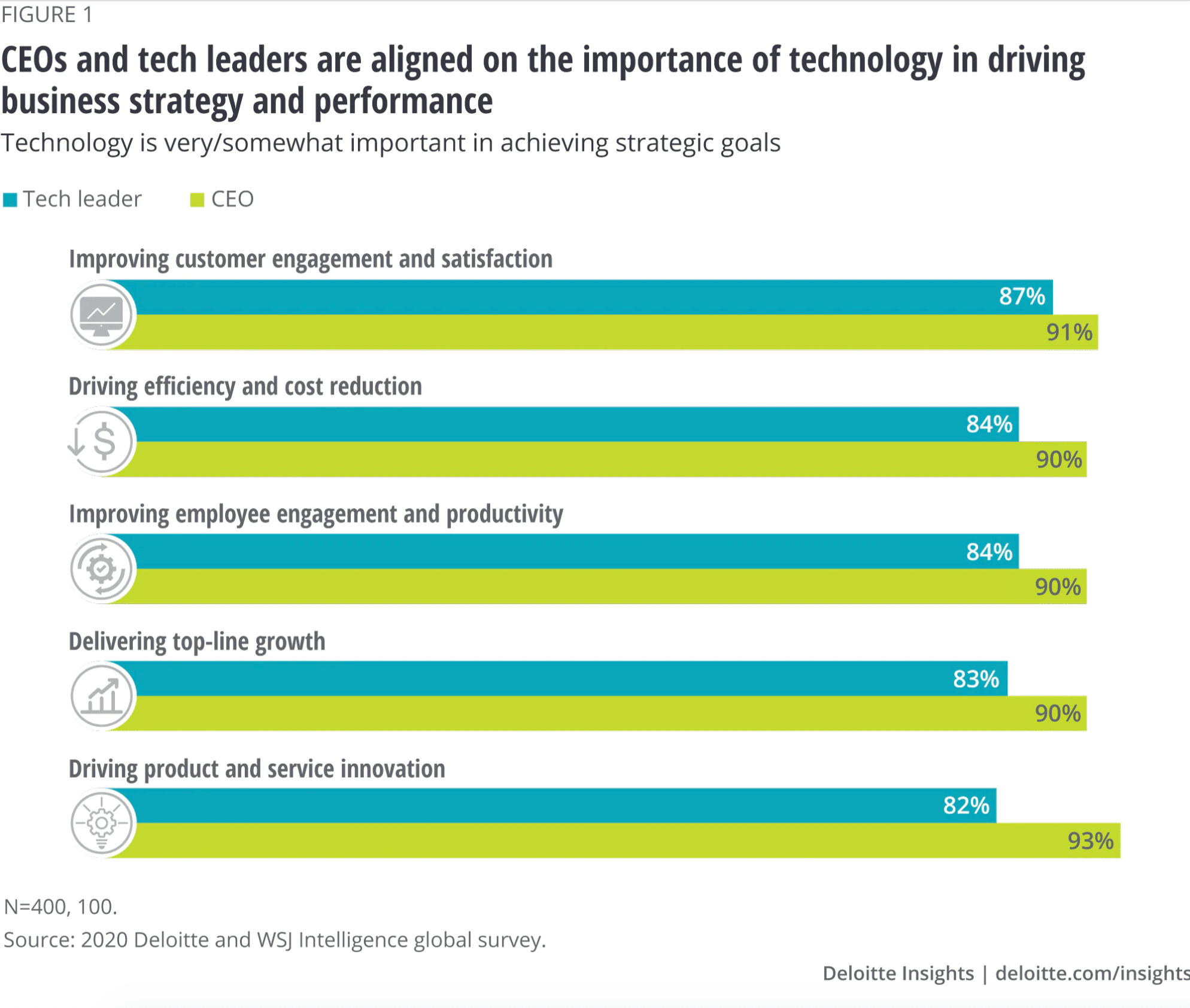Many businesses didn’t have a remote-ready IT strategy in place when COVID-19 hit. That put IT teams and business leaders in a reactive place. They knew their teams needed video conferencing, messaging, and calling to stay connected—but which tools? Most leaders barely had time to ask colleagues what they’d recommend, let alone analyze what tools best fit their business goals.
Now, the landscape is evolving again for a post-pandemic world. This time, businesses see a sort of “work from home (WFH) 2.0” — an age of hybrid remote work where employees choose their location based on where they’re most productive.
What does WFH 2.0 mean for IT strategy? First, it means a hybrid remote model is poised to become the norm. In our “Is remote work sustainable?” report, we found some workers have never been more productive—and some can’t wait to get back into the office. If businesses want to put employees where they’re most likely to succeed, then a hybrid remote workplace is one of their best options.
Second, it means IT strategy has to evolve to support hybrid remote work. “I think, ultimately, what an IT organization should be looking to accomplish is providing a consistent, predictable, friction-free user experience for their employees,” said Rob Rodier, vice president of sales at Lightyear, a procurement and contract management platform for IT and telecom services. “Everything should work everywhere in the same exact way, whether you’re sitting in the office or you’re sitting at home.”
Only a few years ago, this would have been a nightmare IT scenario for many businesses. But thanks to the explosion in software-as-a-service (SaaS) tools and cloud computing, it’s never been easier for businesses to build an IT strategy that supports hybrid remote work.
1. SaaS tools help scale your IT infrastructure
SaaS providers deploy their tools via the cloud, meaning your employees access the same tools no matter where they are. But to deliver its tools via the cloud, a SaaS company has to build a fault-tolerant network capable of uninterrupted service. In doing so, SaaS companies build networks that help ease your own IT workload.
That’s especially true for voice. Building a network that supports voice is time-consuming, expensive, and requires orchestrating an immense amount of IT resources.
“A few years ago . . . really the future of voice in my mind was starting to become a question. Everyone was using their favorite IM. Voice was like this thing where startups wouldn’t even deploy it,” Rodier said.

SaaS companies, especially ones like UCaaS, use globally distributed data centers to bring their networks closer to users. (Image source: NASA)
How did things change so fast? Because a new breed of SaaS companies disrupted the voice over internet protocol (VoIP) space:
- UCaaS, or unified communications as a service, unifies phone, video conferencing, and instant messaging in one app.
- CCaaS, or contact center as a service, replaces the legacy hardware-based systems on-premises contact centers use with cloud-based software.
- CPaaS, or communications platform as a service, allows developers to add real-time communication to their apps (think adding a chatbot to a site or setting up automated calendar reminders).
Recognizing the huge pain point businesses face in building out their networks, these providers built their own networks to bring their tools to their customers.
What the growth of SaaS tools means for IT strategy
When COVID-19 made companies rapidly shift to working from home, it showed that many SaaS companies have built networks capable of supporting mass remote work.
“The pandemic forced almost like a proof of concept on the whole thing,” Rodier said.
What’s more, businesses of all sizes benefit from leaning on SaaS companies’ cloud-based infrastructure. If you’re a big business like an international enterprise, you can run a leaner, more flexible IT network. If you’re a small business, you have more options as to how you build your network, preventing you from taking on too much overhead too soon.
Rodier thinks WFH 2.0 will only accelerate the number of SaaS companies being founded. He sees SaaS tools, especially UCaaS, as proof that businesses can offload some of their IT needs.
“[These tools] underscore the value proposition of SaaS moving towards more of an outsourced model, where IT is not spinning up application servers and securing private data center connections and is relying on someone else to do it,” he said.
How UCaaS helps make it possible
UCaaS providers build their own global IT infrastructure to support stable voice and video connections over long distances, acting as an extension of your own network.
“Let’s say I’ve got my data center in New York, but I’ve got employees that are based on the West Coast, or maybe even international, [and] they have to connect all the way back to that data center in New York. And that can be problematic,” Rodier said.
Everything should work everywhere in the same exact way, whether you’re sitting in the office or you’re sitting at home.
“Voice is something that has historically been a very challenging thing for enterprises to manage. It’s a small amount of network traffic; a call is usually less than a hundred kilobits per second,” Rodier said. But voice is a whiny baby. “It’s very sensitive to latency and jitter and packet loss, and all of this manifests in like echo on calls and dropped calls.”
UCaaS steps in by bringing the network work to you. UCaaS providers don’t connect you to one data center, but a network of data centers all over the world. RingCentral’s network architecture uses 17 data centers around the world supported by more than 200 internet service providers (ISPs).
“All of that edge communications infrastructure is close to your users,” Rodier said. “They’re extremely high-availability networks that are geographically distributed. For an enterprise to replicate that [is] very expensive and very difficult to manage.”
2. Your IT strategy can focus more on growth, less on management
When you use SaaS tools to outsource some of your network needs, you also free yourself to think more about big-picture IT strategy and less about day-to-day management.
“I would say the higher-quality IT people that we [speak] with are focused on helping the business grow, making the business successful, and using IT as a tool to facilitate that,” Rodier said.
What this shift means for IT strategy
For Rodier, this is possibly the most exciting opportunity SaaS tools and WFH 2.0 have created for IT leaders: A moment to rise up from being technical experts to strategic partners.
“This idea that IT is going to be proactively looking at ways to make the business operate more efficiently versus retroactively managing complicated, expensive infrastructure,” Rodier said, “that’s another, I would say, monumental shift in thought process.”
Put another way: IT strategy should be thought of as business strategy.
Many CEOs see technology as more important to business strategy than their own tech leaders do.
CEOs want this from their IT leaders, too. Deloitte and the Wall Street Journal found that CEOs see technology as a driver of business strategy. Their study found CEOs rely on their CIOs more than any other C-suite role or resource, including the board of directors. In fact, many CEOs see technology as more important to business strategy than their own tech leaders do.

Deloitte and WSJ’s study found that CEOs see technology as important in achieving business goals, sometimes even more so than their own tech leaders.
Rodier points to ecommerce’s rapid rise as an example of IT-fueled growth. Think of all the IT infrastructure needed just to make real-time tracking possible. Not just on the consumer side so customers can track their packages either, but also on the supply side where ecommerce brands have to source materials, coordinate with manufacturers, and manage inventory flow.
“The older-school thought process in IT was like managing systems, responding to user issues, and that sort of thing. So, that’s still a piece of it, but I think IT is becoming a strategic function in these companies to help them grow,” Rodier said.
How UCaaS helps make it possible
UCaaS provides a strong example of how IT strategy intersects with business strategy. IT leaders need to take on a consultative role as they become strategic business partners. An example: Meeting with department leaders to understand their goals, then proposing an IT strategy that helps all departments achieve their goals in the most cost-effective way.
This idea that IT is going to be proactively looking at ways to make the business operate more efficiently versus retroactively managing complicated, expensive infrastructure . . . that’s [a] monumental shift in thought process.
So, in the case of UCaaS, IT decision-makers could say switching to a unified phone, video, and messaging app would:
- Stop app switching: Nearly 90% of RingCentral user says they’re better informed on projects, resulting in projects shipping 64% faster.
- Make system integration easier: UCaaS ties into adjacent systems, making integrations like UCaaS plus CCaaS possible. “One of the things that has fundamentally changed is that now voice is being integrated into these other applications, the core business applications like a CRM or a help desk platform or whatever it is,” Rodier said.
- Simplify your IT stack: Rolling out a company-wide UCaaS tool would stop the bloated spend and added security vulnerabilities of different departments (or even teams within departments) using different communication apps.
Big and small businesses alike benefit, too. Tools like a UCaaS save enterprise IT teams from mundane work like coding systems changes at the command-line level or setting up and managing lots of virtual private connections (VPNs). For small businesses, it helps them avoid committing to the upfront and ongoing costs of a traditional on-site phone system, or PBX.
In making tools like UCaaS part of their IT strategy, leaders bring simple, predictable, and cost-effective solutions to their businesses.
“It’s not laziness; it’s getting [the] mundane management of these tools off their plate so they can focus on really being a strategic value to the organization,” Rodier said.
3. Hybrid remote work gives you an edge in hiring
Another great example of thinking about IT strategy as business strategy: hiring. When your IT strategy can support working remotely as well as working at the office, your business becomes more attractive—and expands its access—to top talent.
What supporting hybrid remote means for IT strategy
Lynn Kier, vice president of corporate communications at Diebold Nixdorf, gives three reasons why remote work equalizes recruiting and employee experience.
- It expands your recruiting pool: When geographic boundaries aren’t an obstacle, you can recruit by talent, not location. As Rodier puts it, “Now, when you’re hiring, you can hire over a much larger geography, and it can be a national search when that makes sense for the organization,” Rodier said.
- It levels the competitive field: Just a few years ago, it seemed like only tech giants could support remote work. But now small businesses can, too.
- It delivers a better employee experience: IT can replicate the same employee experience regardless of location, yet give employees the flexibility to fit work into their lifestyle. For Rodier, that’s a definite benefit. “If I need to go out and get my kids from the bus stop at three o’clock, I can do that,” he said.

The ability to work from anywhere is a highly desirable benefit for an increasingly nomadic workforce.
Given that almost 5 million people are digital nomads, and another 17 million aspire to be, the demand for a location-flexible workplace is likely to increase.
How UCaaS helps make it possible
UCaaS platforms form the hub of company communication. They bring the three most essential tools teams need to collaborate—messaging, video conferencing, and calling—into one app that’s accessible from anywhere. That kind of connection means a company headquartered in San Francisco can confidently recruit someone in Atlanta.
Now, when you’re hiring, you can hire over a much larger geography.
Rodier recalled how he escaped the Miami heat by working the New Hampshire mountains. “I never missed a beat. My experience was the same. And that’s the new reality; that’s what employees are going to expect. That’s what executives are going to expect,” he said.
4. Military-grade cloud security means you can sleep well at night
Downtime costs millions per hour. SaaS companies know that if their networks fail, their customers fail. That’s why SaaS companies take investing in their networks seriously, including the security necessary to keep your data safe in the cloud.
What cloud security means for IT strategy
SaaS companies have a clear incentive to maintain secure, reliable networks. This has led to the widespread adoption of advanced cybersecurity protocols as standard. Consider data encryption.
“All of the intelligence lives in the cloud, and those communications are encrypted, and usually encrypted to a DOD standard,” Rodier said.
I can have all of these users sitting out anywhere in the world, and instead of having to have them securely connect back to my data center and then go out from the data center, you literally just make a direct connection to the cloud.
By “DOD standard,” Rodier refers to the Advanced Encryption Standard, or AES-256—the type of encryption used by federal agencies such as the National Security Administration (NSA). That’s usually backed by even more privacy and security features, such as multifactor authentication and single sign-on (SSO) for secure logins.
How UCaaS helps make it possible
UCaaS companies build the kind of architecture that helps chief security officers (CSOs) sleep soundly. By integrating multiple communication channels into one tool, you have fewer apps to manage, which reduces your attack surface. So does not having to set up VPN access to your network just to support voice communication.
“Part of the beauty of [UCaaS] network architecture . . . is that you’re not actually connecting back to the enterprise network,” Rodier said.
Because UCaaS networks process data at the edge (think of all those globally distributed data centers), they make things extremely secure and simple for businesses.
“I can have all of these users sitting out anywhere in the world, and instead of having to have them securely connect back to my data center and then go out from the data center, you literally just make a direct connection to the cloud, to the UCaaS provider cloud,” Rodier said.
5. It’s getting easier to tie ROI back to IT strategy
Visibility is crucial to getting buy-in. For IT professionals to become strategic business partners, they need to visualize their strategy so it’s as easy for other leaders to understand as possible. Likewise, small business leaders who have to make IT decisions need to readily understand the expected impact.
Using SaaS tools makes it easier to calculate and show the ROI of your IT strategy. Not only do you offload some of your IT needs (and their costs) to your SaaS providers, but you also get clearer lines of sight on your software expenditures.
What showing ROI means for IT strategy
The upfront costs of building your IT infrastructure—plus the ongoing costs of managing your network—are expensive and difficult to track. Building your own data center requires ongoing contract management with ISPs, hiring and managing a team, and even making commercial real estate transactions.
But SaaS tools simplify the demonstration of ROI thanks to inclusive per-user subscription pricing. Imagine that you lead a company heavily invested in content marketing, and you want an end-to-end workflow for your mostly remote editorial team.
You could work with your marketing team to understand all the requirements needed, identify the necessary resources, and then calculate the cost and expected ROI of building an editorial workflow in-house. Then, you could compare your estimate with a SaaS content marketing platform to visualize the ROI and justify your recommended IT strategy.
How UCaaS helps make it possible
UCaaS solves one of the biggest pain points IT professionals have: designing a business network for voice. It’s not a secret that legacy solutions like on-site phone systems aren’t cost-effective, but most businesses haven’t had another option. “In many cases, enterprises are vastly overpaying just for that phone service,” Rodier said.
UCaaS provides an alternative. Its voice capability can save companies tens of thousands of dollars. Consider that a cloud phone system compared to a traditional office phone system can save a company of 20 people over $32,000 in two years, and a company of 100 almost $92,000 over the same time period.
A piece of advice from Rodier: It’s easy for businesses to look at UCaaS pricing like a phone bill, but that negatively blurs its ROI. Phone bills typically show only a business’s cost of long distance and its public switched telephone network (PSTN) trunks.
What a phone bill doesn’t show is the “very expensive [cost in] human resources for organizations,” Rodier said. Think about all the labor IT technicians put in, from manually coding system updates to provisioning new users. “[They’re] doing all of this stuff that the UCaaS provider has made a point-and-click exercise through an administration dashboard,” Rodier said.
So factor in the soft ROI when evaluating UCaaS. Beyond the monthly subscription, weigh in the time and labor you save over the long term. “When you do that, you really start to understand what these enterprises are investing in terms of all of the multifaceted things that have to make this system work,” Rodier said. “[Add] the human resources that go on top of it, the ROI starts to become clear.”
Start building a remote-ready IT strategy with UCaaS
The explosion of SaaS tools, particularly UCaaS, supports businesses of all sizes in moving toward a hybrid remote workplace. But even more exciting is how this helps companies realize their IT strategies as a growth lever. Enterprise IT leaders and small business owners alike can find ways to cut costs and achieve business goals by strategically adopting SaaS tools that come backed by their own robust networks.
What’s more, SaaS companies often let you use their tools for free so you can make sure they’re the right fit. Explore if RingCentral Office is the right UCaaS platform for your business by using Glip, our free team video software with messaging built in.
Originally published Jan 29, 2021, updated Dec 30, 2022





